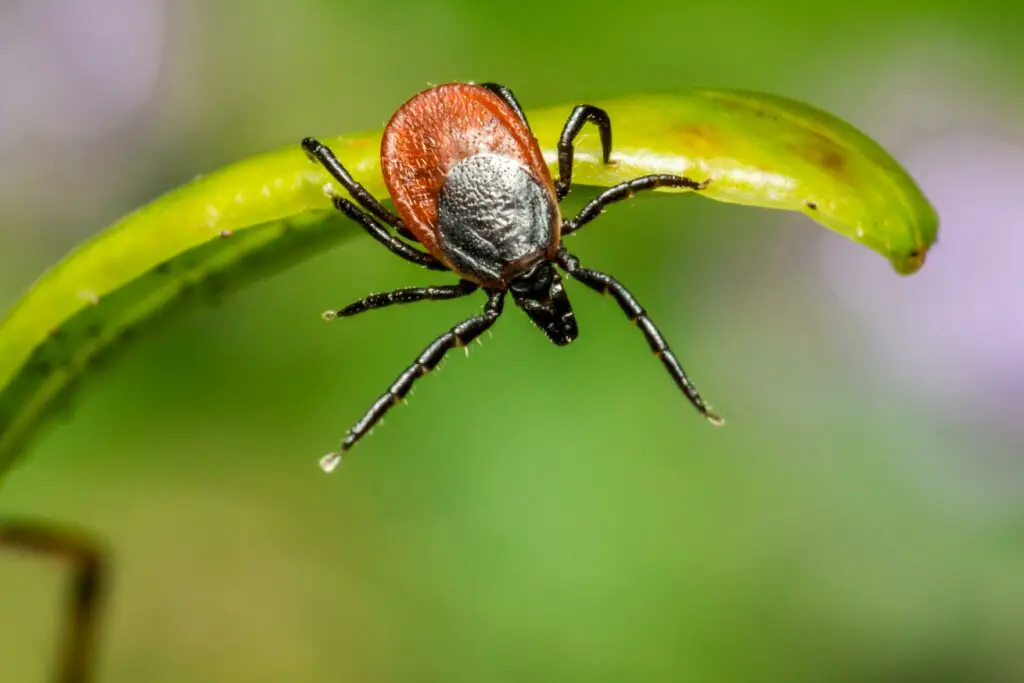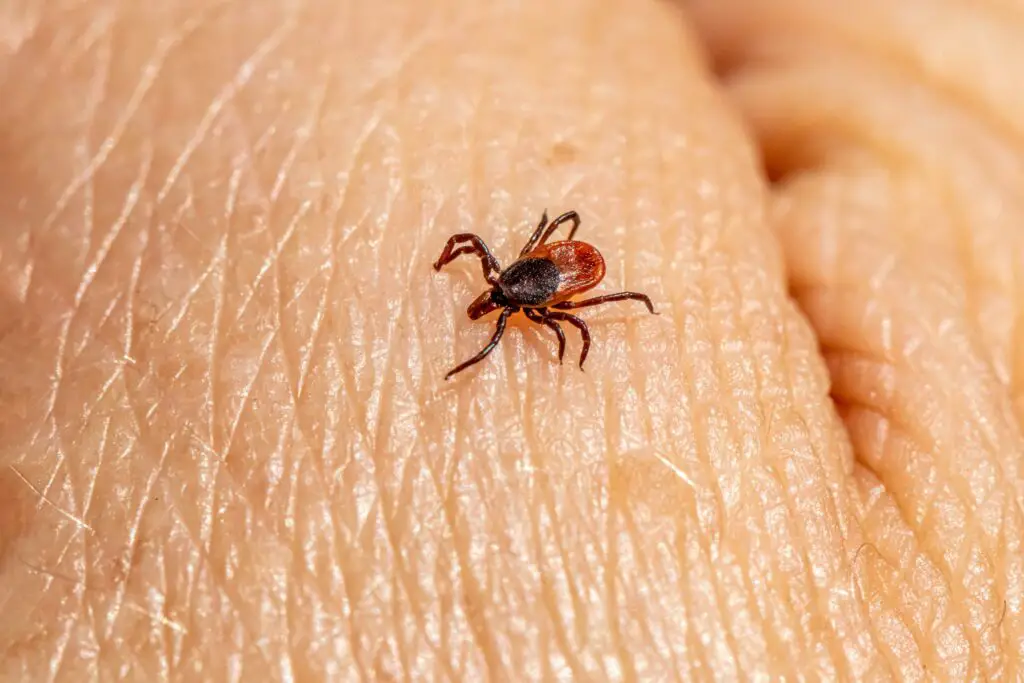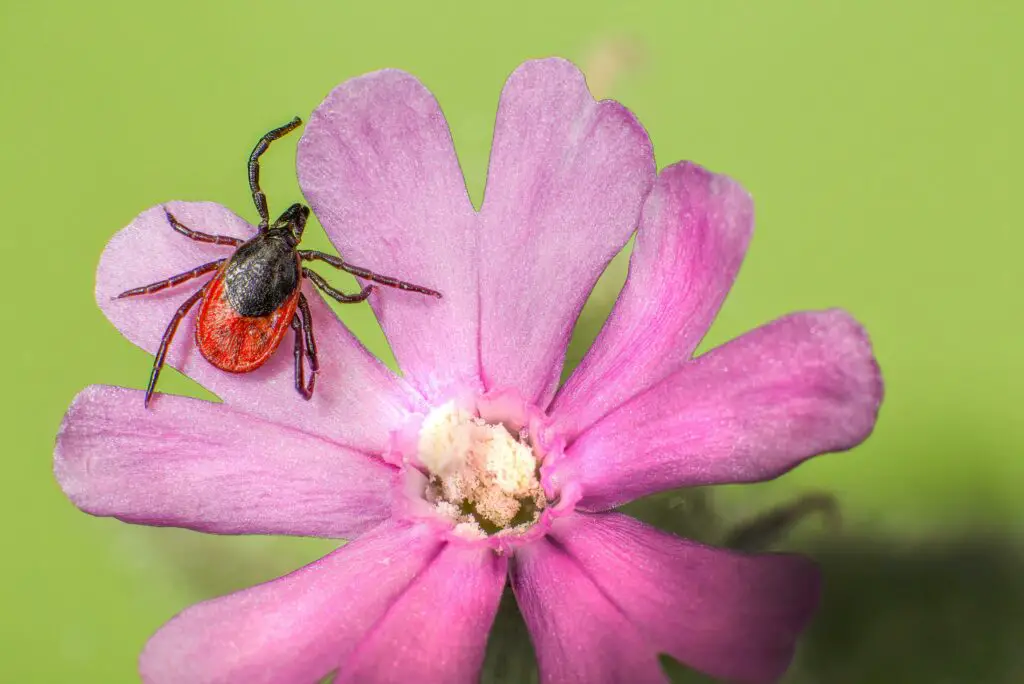Nature is the home to an incredibly versatile array of species, but ticks are definitely one of those that we tend to avoid at all costs.
These tiny arachnids, that are related to spiders, mites, and scorpions, are in fact parasites that survive by attaching themselves to larger animals and feeding on their blood. Humans aren’t spared either. Sadly, these insects carry harmful bacteria that can spread disease to people.
Sadly, tick-borne diseases are at an all-time high, with about 50,000 cases reported each year, and far more going unreported.

There are different types of ticks, and unfortunately, they sometimes find their way to people’s homes. The types most commonly found in homes are the black-legged tick, the dog tick, and the brown dog tick.
- Black-legged Ticks – known as deer ticks, these ticks are typically brown or black in color and have a flattened, oval-shaped body. They are commonly found in wooded areas and can transmit Lyme disease.
- Dog Ticks are larger and can range in color from brown to reddish-brown. They have a tough, shield-shaped body. Dog ticks can transmit diseases such as Rocky Mountain spotted fever.
- Brown Dog Ticks are brown in color and have a slender body.
Although the tick season is between March and October, or sometimes longer, we should be wary of this insects all year round. In fact,if beaten by a tick, a person can develop symptoms even after two or three months.

The bite itself isn’t painful and can cause swelling, itchiness, blistering, and bruising. The bad thing is that ticks also carry and transmit severe diseases, most commonly Lyme disease, as well as Rocky Mountain spotted fever, ehrlichiosis, and babesiosis.
Initially, Lyme disease develops as a circular red ‘bull’s eye’ rash around the site of a tick bite. However, not everyone gets a rash and you should also watch out for a flu-like illness with fever, headache, tiredness and general aches and pains.
The best way to prevent being bitten by a tick is to avoid tall grasses and areas where ticks thrive (such as moorlands and woodlands), especially during the warmer months.
In case you do get bitten, you should remove the tick as soon as possible in order to prevent infections.

These are some of the ways of safe removal.
- Use fine-tipped tweezers: Use clean, fine-tipped tweezers to grasp the tick as close to the skin as possible.
- Pull gently: Apply steady upward pressure, being careful not to squeeze or crush the tick. Aim to remove the tick in one smooth motion without twisting or jerking. Twisting or jerking can cause the tick’s head to break off and stay inside the skin, where it can still transmit disease.
- Clean the area: After removing the tick, clean the affected area with soap and water or an antiseptic solution. Monitor the site of the bite for any signs of infection or a rash, and consult a healthcare professional if necessary.

If by any chance ticks find their way into your home, take immediate action in order to prevent infestation. Most times, ticks are brought into your home in case they stick on your clothes or onto your pets.
- Isolate the area: If you have identified the presence of ticks in a specific area, keep pets and children away from that space.
- Wear protective gear: Put on gloves and a long-sleeved shirt to protect yourself from potential tick bites.
- Clean the area: Clean the area where you found the tick. If it is in bedding, wash the sheets. Inspect the area to ensure there are no more ticks that are present. Dispose of the tick by either flushing it down the toilet or sealing it in a container or ziplock bag before placing it in the trash.
Wealthy Developer Destroys Elderly Man’s Home, Stumbles Upon His Own Childhood Photograph Amidst the Debris

A wealthy man, convinced that money could buy anything, destroyed a poor old man’s house to make way for a shopping mall. Later, while examining the debris, he discovered a childhood photo among the rubble.
Can greed make someone so blind that they harm others to fulfill their own desires? In July 2021, real estate developer Elliot Morris from Florida unintentionally shattered the dreams of an elderly man named Joe Brooke in his pursuit of wealth.
Elliot was searching for the perfect spot to build a fancy mall when he noticed Joe’s property. He was taken with the location and decided it would be the ideal place for his new project. Elliot chose to demolish Joe’s house to clear the land. When Joe protested, Elliot dismissed him as just an obstacle that could easily be removed.
Joe pleaded with Elliot, explaining that the house held precious memories of his late wife and that he had nowhere else to go. However, Elliot ignored Joe’s desperate requests. He informed Joe that he had already received approval from the mayor and planned to start the demolition in two weeks, leaving Joe with no choice but to leave.
Despite his fears, Joe refused to accept any money in exchange for his cherished home. As the deadline approached, he hoped for a miracle, but the day of demolition arrived too quickly.
When Elliot returned with his workers and heavy machinery, Joe once again begged him not to tear down his house. Elliot coldly reminded Joe that he had already given him a deadline and handed him a check, showing no concern for Joe’s situation.
Elliot ordered one of his workers to take Joe to a nursing home and insisted that Joe take the money, but Joe refused. With tears in his eyes, Joe told Elliot that he had let greed consume him, reminding him that money could not buy everything. Elliot dismissed Joe’s words and watched with satisfaction as his workers demolished the house. He felt a sense of triumph as he saw the building fall to the ground.
Later that day, Elliot returned to the site to celebrate his achievement. As he walked over the ruins, he stumbled upon the shattered glass of a photo frame. Picking it up, he recognized the image of his mother holding a baby.
Confused, Elliot realized this was a photo of him as a child, and he wondered how it had ended up in Joe’s home. Driven by curiosity, he immediately went to the nursing home to confront Joe. When Joe saw Elliot, he was upset, expecting more trouble. But Elliot showed him the photo he had found. He wanted to know how Joe had the picture of his mother.
Joe explained that he had found Elliot’s mother, Samantha, on the street 30 years ago, struggling in the rain with a baby in her arms. Joe had just come from his wife’s funeral and felt compelled to help her.
Joe shared that he had taken Samantha in, as she had been thrown out by her boyfriend. For five years, Samantha lived with Joe, who treated her like family. Eventually, Joe helped her get back on her feet, enabling her to start her own business and build a life for herself.
Elliot felt his heart break as Joe spoke, realizing that he had been unaware of the love and support Joe had given his mother. Overwhelmed with guilt, Elliot decided to make amends. The next day, he put up a sign on Joe’s old property and began constructing a new home for him.
Within a few months, a beautiful house replaced the one Elliot had destroyed. Elliot gifted this new home to Joe, sincerely apologizing for his past ignorance. Joe, however, refused any additional help, saying he would only accept the house and wanted nothing else but Elliot’s love. Joe moved into his new home, leading a simple life. He inspired Elliot, teaching him that compassion and love matter more than wealth.
In the end, Elliot decided to use his resources to help others by building retirement homes for those in need. He learned to respect people’s homes and dreams, vowing never to harm anyone for personal gain again. The story reminds us of two important lessons: never destroy someone else’s happiness to fulfill your own dreams and strive to create something beneficial for others when you have the chance.



Leave a Reply